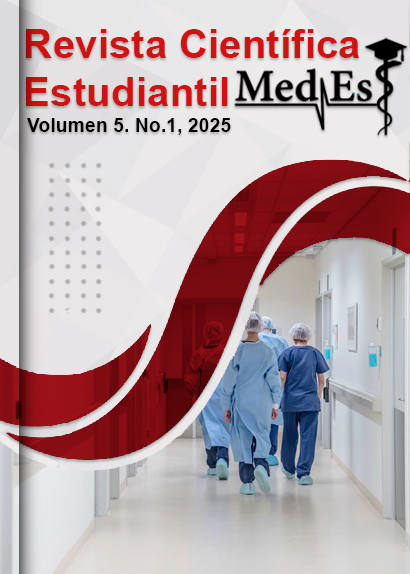Epidermoid carcinoma of the penis: a case report
Keywords:
Epidermoid Carcinoma, Penile Cancer, PhallectomyAbstract
Introduction: the penis has symbolic and physical importance for all men, as it is crucial for sexual functioning and urination. Penile cancer is a proliferative and disordered process of the squamous epithelial cells of the penis; it is a rare tumor, which has been overlooked in male oncology.
Objective: to describe the case of a patient with squamous cell carcinoma of the penis.
Case presentation: 21-year-old white male patient with a health history who attended the Urology consultation at the Faustino Pérez Provincial Clinical Surgical Teaching Hospital due to a lesion on the glans that had an ulcerated appearance that increased in size until it occupied two thirds. of the penis of 8 months of evolution, accompanied by itching.
Conclusions: Penile cancer is a rare but serious disease that affects men. Prevention includes proper hygiene practices, vaccination against human papillomavirus, and avoiding risk factors such as tobacco. Early diagnosis is crucial for effective treatment and avoiding rapid progression of the disease. Education about this disease is essential to promote early detection and improve patient outcomes.
Downloads
References
1. Piñón García K, Almeida Esquivel Y, Zayas Pelegrín LD, González Basulto MJ. Carcinoma de células escamosas de pene. Arch méd Camagüey [Internet]. 2023 [citado 10/5/2024]; 27. Disponible en: http://scielo.sld.cu/scielo.php?script=sci_arttext&pid=S1025-02552023000100018&lng=es
2. Casado Méndez PR, Gonçalves Monteiro A, Santos Fonseca RS, Méndez López VC, Artime Martínez LM. Caracterización clínico-epidemiológica del cáncer de pene en Guinea Bissau. Rev Cubana Urol. [Internet] 2023 [citado 10/5/2024]; 13:e1024. Disponible en: https://revurologia.sld.cu/index.php/rcu/article/viewFile/1024/837
3. Escobar Pabón G, Calderón JM, Orozco Delgado D, Vallejo Suárez C, Chininin Moreno D et al. El cáncer de pene una patología inadvertida: reporte de 6 casos. Rev Mex Urol. [Internet]. 2023 [citado 10/5/2024]; 83(1):e08. Disponible en: http://www.scielo.org.mx/scielo.php?script=sci_arttext&pid=S2007-40852023000100008&lng=es
4. Diz Rodríguez R, Vírseda Chamorro M, Arance Gil I, Quijano Barroso P, Martínez Benito MM et al. Revisión de los tumores epidermoides de pene. Actas Urol Ep. [Internet] 2007 [citado 9/5/2024]; 31:1. Disponible en: https://scielo.isciii.es/scielo.php?script=sci_arttext&pid=S0210-48062007000100002
5. Garcés Erazo KL, Quisilema Ron VA, Pacheco Romero KE, Bungacho Moreno DR. Diagnóstico de cáncer de pene. RECIMUNDO. [Internet] 2020 [citado 10/5/2024]; 114-121. Disponible en: http://recimundo.com/index.php/es/article/view/784
6. Cabrera Mora NA, Sánchez Núñez JE, Hernández Hernández RA, Rodríguez Valle ED, De los Santos González JA et al. Características clínico-patológicas del cáncer de pene: experiencia actual de un centro hospitalario de tercer nivel en México. Rev Mex Urol. [Internet]. 2020 [citado 10/5/2024]; 80(5):e04. Disponible en: http://www.scielo.org.mx/scielo.php?script=sci_arttext&pid=S2007-40852020000500004&lng=es
7. Armas Martínez L, Sagué Larrea JL, Doimeadios Rodríguez Z. Cáncer de pene. A propósito de un caso. Rev Hab de Ciencias Médicas. [Internet]. 2024 [citado 10/5/2024]; 23. Disponible en: http://www.revhabanera.sld.cu/index.php/rhab/article/view/5418
8. Villacorta Córdova FN, Enríquez Chugá CA, Mazapanta Guanolouisa SN, Villafuerte Rodríguez PA. Cáncer de pene. Caso Clínico. Revista Científica Digital. [Internet] 2023 [citado 10/5/2024]; 14(1):15-23. Disponible en: https://cssn.espoch.edu.ec/index.php/v3/article/view/207
Downloads
Published
How to Cite
Issue
Section
License
Copyright (c) 2024 Ardyn Concepción González-Morales, Juan Antonio Rodríguez-Alonso, Rodolfo Mesa-Alonso

This work is licensed under a Creative Commons Attribution-NonCommercial 4.0 International License.
Those authors who have publications with this journal accept the following terms: The authors will retain their copyright and guarantee the journal the right of first publication of their work, which will be simultaneously subject to the Recognition License. Creative Commons that allows third parties to share the work as long as its author and its first publication in this magazine are indicated. Authors may adopt other non-exclusive license agreements for the distribution of the published version of the work (e.g.: deposit it in an institutional telematic archive or publish it in a monographic volume) as long as the initial publication in this journal is indicated. Authors are allowed and recommended to disseminate their work through the Internet (e.g.: in institutional telematic archives or on your website) before and during the submission process, which can produce interesting exchanges and increase citations of the published work.





